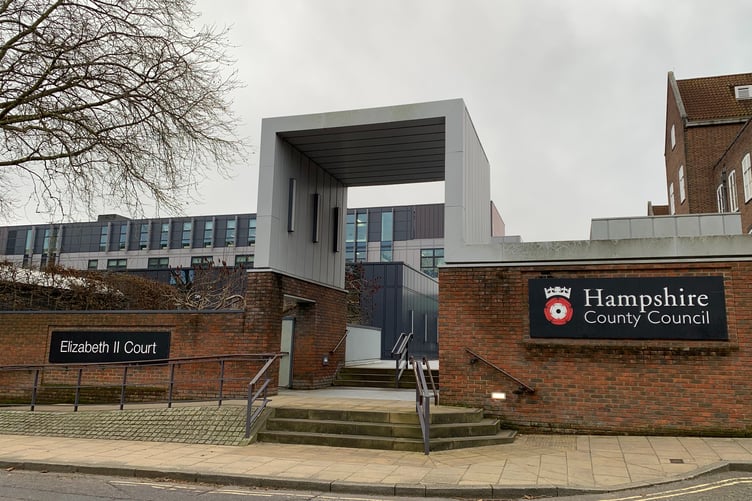Hampshire County Council will increase council tax by 4.995 percent for 2025/26.
The decision means that the council tax for band D for the year beginning April 1, 2025, is £1,609.83, an increase of £1.47 per week, of which 2 percent is specifically for adult social care.
This amount does not include the amount households will also pay to their borough district council, the police, fire authority and any parish councils. The move will see the county council raise £876 million.
Despite financial officer Rob Carr recommending a referendum to increase council tax by 15 percent, Hampshire County Council has decided to raise it by 4.995 percent after the Government refused the request for exceptional financial support.
With the decision, the council will have to draw £68.2 million from reserves to close the 2025/26 budget, leaving its pot of reserves with £31.8 million.
Cllr Peter Latham, supporting the percentage increase, said that although he “respects the logic” in Mr Carr’s recommendation, it is not something that he can support.
Councillor Malcolm Wallace said that, although many of the reasons for the council’s current financial situation were beyond its control, the budget and the precept could lead the council to the brink of a section 114 ‘bankruptcy’ declaration.
He emphasised that the situation represents “a failure on the part of the Government as a whole to act in the best interest of the residents”.
County council leader Cllr Nick Adams-King said that as a result of frozen council tax for years in line with the policy of the previous government, “this is a necessary increase to help tackle the continued pressure on our budget, which is now at a record high”.
“We had hoped that the Government would allow us to increase council tax up to a maximum of 15 percent from this April, which would have helped us to take action towards balancing the books beyond this coming financial year, but this was not the case.”
Using reserves puts the 2026/27 budget in a difficult position.
Cllr Adams-King said that by 2026/27, the council may be talking about section 114 – effectively declaring bankruptcy as it can’t deliver a balanced budget as it is legally required to.
He said it would be a contingency measure to have an early conversation with the government to continue the dialogue about exceptional financial support.
Cllr Adams-King said: “They need to understand now that we have a problem for next year, and they need to look at ways in which they can help us and is not to just make us put up council tax, and give us that as the only option as they did this year, but enables us to look at different ways by in which we can still reform and help to balance the budget in that way.
“We will not be bankrupt, we will still care for our most vulnerable residents, we will fix potholes, we will still educate our children. We can and we will get through this together”.
Cllr Adams-King said that as part of the council tax bill letter that residents will receive, they will receive the “Hampshire pledge”.
“No matter what, we will continue to look after the residents of Hampshire. We will still continue to do all we should for our neighbours.
“We are asking the people of Hampshire to help us, and we are making a pledge to them to reassure them that whatever the situation we find ourselves in, those services will continue.”
The pledge is a list of promises the council made to residents until the county council’s “final day”.
The precept was approved with 55 percent of the votes in favour.
After the meeting, Cllr Adams-King said: “The council tax increase agreed today has been an incredibly difficult decision to make, particularly as we fully understand the ongoing pressure on household budgets. However, this increase – an extra £1.47 per week for a Band D property, is essential to help us ensure that we can continue to deliver core services to those people who rely on the support of the county council each and every day – the children at risk of harm, abuse and neglect, our growing older population, and children and adults with disabilities and additional needs.”





Comments
This article has no comments yet. Be the first to leave a comment.